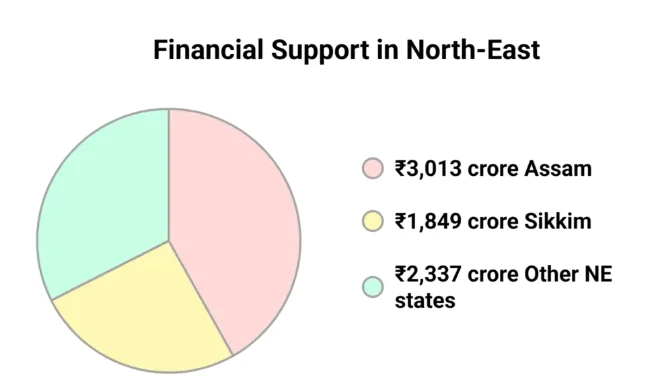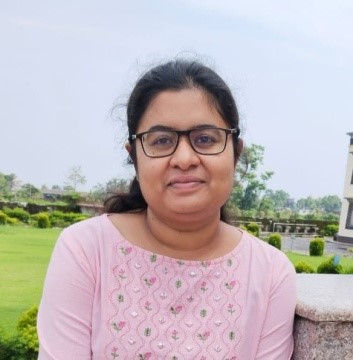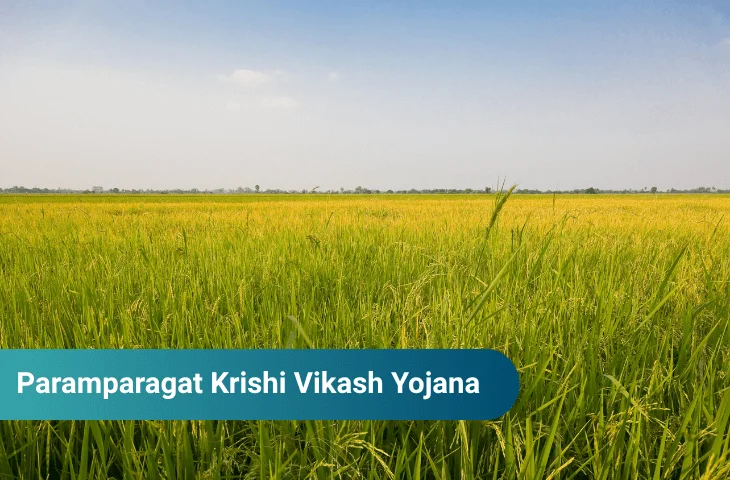Paramparagat Krishi Vikas Yojana (PKVY) is a flagship initiative launched by the Government of India in 2015 under the National Mission for Sustainable Agriculture (NMSA). The scheme focuses on promoting organic farming across the country to improve soil health, ensure food safety, and enhance farmer incomes.
The primary objective of PKVY is to encourage farmers to adopt chemical-free, sustainable farming practices through a cluster-based approach. Farmers are organized into clusters of around 20 hectares each, enabling resource sharing, uniform farming standards, and cost efficiency.
PKVY is designed to integrate low-cost organic methods with modern agricultural practices, building a scalable model of eco-friendly agriculture in India.
Why was PKVY Launched?
India faces multiple challenges in agriculture, including soil degradation, water contamination, and the excessive use of chemical fertilizers and pesticides. To tackle these issues and promote sustainability, PKVY was introduced to:
- Encourage organic farming among small and marginal farmers.
- Improve soil fertility and reduce dependency on chemicals.
- Promote environmentally sustainable practices in agriculture.
- Enhance farmers’ income by enabling access to niche markets for organic produce.
- Strengthen domestic and international market linkages for organic products.
Who is Eligible for PKVY?
PKVY is applicable for all farmers and agricultural institutions with a maximum landholding of 2 hectares. Farmers are organized into clusters, which collectively adopt organic farming practices. The cluster-based model ensures:
- Standardized organic farming techniques.
- Efficient utilization of shared resources like inputs, machinery, and labor.
- Cost reduction and better market access for organic products.
What are the Key Benefits of PKVY for Farmers?
PKVY provides financial and technical support to farmers transitioning to organic farming. The financial assistance of ₹31,500 per hectare is provided over a period of three years, covering different components:
| Component | Assistance (per ha, 3 years) |
| On-farm & off-farm organic inputs | ₹15,000 |
| Marketing, packaging, branding, value addition | ₹4,500 |
| Certification & residue analysis | ₹3,000 |
| Training & capacity building | ₹9,000 |
Other benefits include:
- Market Access: Through the Jaivik Kheti Portal, farmers can sell directly to consumers and traders, ensuring transparency and better pricing.
- Skill Development: Training programs provide guidance on organic practices, soil fertility improvement, and diversified cropping systems.
- Brand Building: Assistance in marketing, packaging, and branding helps farmers establish a market identity for their organic produce.
- Environmental Benefits: Adoption of organic farming enhances soil fertility, reduces chemical residues, and promotes sustainable agricultural practices.
Also Check: List of Government Schemes of India
How is PKVY Implemented?
PKVY implementation is designed to ensure transparency and effectiveness. The step-by-step process includes:
| Step | Description |
| Farmer Registration | Farmers apply through Regional Councils, which guide them through enrolment and cluster formation. |
| Annual Action Plan | Regional Councils compile applications into an Annual Action Plan and submit it to the Ministry of Agriculture & Farmers Welfare for approval. |
| Fund Allocation | The Central Government releases funds to State Governments, which are then transferred to Regional Councils. |
| Direct Benefit Transfer (DBT) | Financial support for organic inputs, training, certification, and marketing is provided directly to farmers through DBT. |
What Types of Organic Certification does PKVY Provide?
PKVY offers two types of organic certification:
| Certification Type | Key Features | Target Market / Beneficiaries |
| Third-Party Certification (NPOP) | • Managed under the National Programme for Organic Production (NPOP) • Ensures compliance with international organic standards | • Global markets • Indian organic producers seeking international certification |
| Participatory Guarantee System (PGS-India) | • Community-based certification system • Farmers collectively verify practices and declare produce as organic | • Domestic markets • Small and marginal farmers |
What is Large Area Certification (LAC) under PKVY?
To accelerate organic certification, the government launched the Large Area Certification (LAC) program in 2020–21. LAC focuses on regions with minimal or no prior chemical farming, such as:
- Tribal belts
- Eco-preserved zones
- Islands
Benefits of LAC:
- Reduces the organic conversion period from 2–3 years to a few months.
- Enables faster certification and better income for farmers.
- Enhances global competitiveness of India’s organic sector.
Sikkim, under LAC, has become the world’s only fully organic state, demonstrating the program’s effectiveness.
Check Out: Complete List of Important Schemes for NABARD Grade A Exam
How has PKVY Impacted North-East India?
The North-East region has significant potential for organic farming due to its pristine ecological conditions. PKVY has made a notable impact in this region:
| State | Area under Organic Farming (ha) | Farmers Benefitted |
| Assam | 4,400 | 9,740 |
| Sikkim | 63,000 | Fully organic state |
| Arunachal Pradesh, Mizoram, Manipur, Nagaland, Tripura, Meghalaya | 4,140 | Various farmers |

What Role does the Jaivik Kheti Portal Play in PKVY?
The Jaivik Kheti Portal is a dedicated online platform developed under PKVY to:
- Facilitate direct sale of organic products from farmers to consumers.
- Support transparency in marketing and pricing.
- Enable FPOs (Farmer Producer Organizations), input suppliers, and buyers to connect effectively.
- Track and manage certification and residue analysis data.
| Category | Count (as of Dec 2024) |
| Farmers | 6.23 lakh |
| Local Groups | 19,016 |
| Input Suppliers | 89 |
| Buyers | 8,676 |
Get ready to crack government job exams with leading educators
How does PKVY Support Farmer Producer Organizations (FPOs)?
PKVY recognizes that farmer collectives face challenges in sourcing inputs, accessing credit, and marketing produce. The scheme addresses these by:
- Providing management support for FPOs.
- Offering matching equity grants and access to credit guarantee funds.
- Encouraging Community Based Business Organisations (CBBOs) to provide marketing and training assistance.
As of December 2024, 9,268 FPOs had been registered under the central sector scheme “Formation and Promotion of 10,000 FPOs,” ensuring collective empowerment and improved market competitiveness.
What are the Funding Patterns of PKVY?
PKVY is jointly funded by the Central and State Governments, with different ratios depending on the region:
- 60:40 (Centre: State) for most states.
- 90:10 for North-Eastern and Himalayan states.
- 100% funding by the Centre for Union Territories.
Key Achievements of PKVY
Since its launch in 2015, PKVY has achieved significant milestones:
- 15 lakh hectares under organic farming.
- 52,289 clusters formed, benefiting 25.30 lakh farmers.
- 14.99 lakh hectares covered through cluster-based organic farming.
- Establishment of Jaivik Kheti Portal connecting farmers, buyers, and input suppliers.
- Success in North-East India, including Sikkim becoming fully organic.
- Introduction of Large Area Certification (LAC) to speed up certification in untouched regions.
Key Takeaways
| Aspect | Details |
| Launched | 2015 under NMSA |
| Objective | Promote organic farming, improve soil health, enhance farmer income |
| Eligibility | Farmers/institutions with ≤2 hectares of land |
| Financial Assistance | ₹31,500/ha for 3 years |
| Cluster Size | 20 hectares per cluster |
| Certification | NPOP (International), PGS-India (Domestic) |
| Special Program | Large Area Certification (LAC) |
| Digital Platform | Jaivik Kheti Portal |
| Coverage (2025) | 15 lakh ha, 52,289 clusters, 25.30 lakh farmers |
| NE India Impact | Sikkim fully organic, Assam & other states promoted organic farming |
Questions Based on PKVY
- When was PKVY launched?
- A) 2010
- B) 2015
- C) 2018
- D) 2020
- E) 2005
- What is the maximum landholding eligible for PKVY?
- A) 1 hectare
- B) 2 hectares
- C) 5 hectares
- D) 10 hectares
- E) No limit
- Which certification system under PKVY is community-based?
- A) NPOP
- B) ISO
- C) PGS-India
- D) FSSAI
- E) HACCP
- How much financial assistance is provided per hectare for 3 years under PKVY?
- A) ₹15,000
- B) ₹25,000
- C) ₹31,500
- D) ₹40,000
- E) ₹50,000
- What is the cluster size under PKVY?
- A) 5 ha
- B) 10 ha
- C) 20 ha
- D) 50 ha
- E) 100 ha
- Which portal helps farmers sell organic products directly?
- A) eNAM
- B) Jaivik Kheti Portal
- C) PM-KISAN
- D) AgriMarket Portal
- E) FPOConnect
- Which state is the only fully organic state under LAC?
- A) Assam
- B) Meghalaya
- C) Sikkim
- D) Mizoram
- E) Tripura
- What is the funding ratio for North-Eastern states?
- A) 60:40
- B) 70:30
- C) 80:20
- D) 90:10
- E) 100% by Centre
- Which component of PKVY receives the highest financial allocation?
- A) Training & capacity building
- B) Marketing & branding
- C) On-farm & off-farm organic inputs
- D) Certification
- E) Soil testing
- What is the main goal of Large Area Certification (LAC)?
- A) Reduce farmer costs
- B) Speed up organic certification
- C) Promote exports
- D) Provide subsidies
- E) Increase land size
Also Read:
Answer Key
| Question No. | Answer | Question No. | Answer |
| 1 | B | 6 | B |
| 2 | B | 7 | C |
| 3 | C | 8 | D |
| 4 | C | 9 | C |
| 5 | C | 10 | B |
- MISHTI Scheme, India’s Initiative to Restore Mangrove Ecosystems
- National Green Hydrogen Mission Features, Objectives, and Benefits
- Paramparagat Krishi Vikas Yojana, Transforming India’s Organic Farming
- Mission on Integrated Development of Horticulture NHM and HMNEH
- Swachh Bharat Mission, India’s Journey Towards Cleanliness and Hygiene
- SAGY, A Step Towards Holistic Development of Indian Villages

Hi, I’m Aditi. I work as a Content Writer at Oliveboard, where I have been simplifying exam-related content for the past 4 years. I create clear and easy-to-understand guides for JAIIB, CAIIB, and UGC exams. My work includes breaking down notifications, admit cards, and exam updates, as well as preparing study plans and subject-wise strategies.
My goal is to support working professionals in managing their exam preparation alongside a full-time job and to help them achieve career growth.
